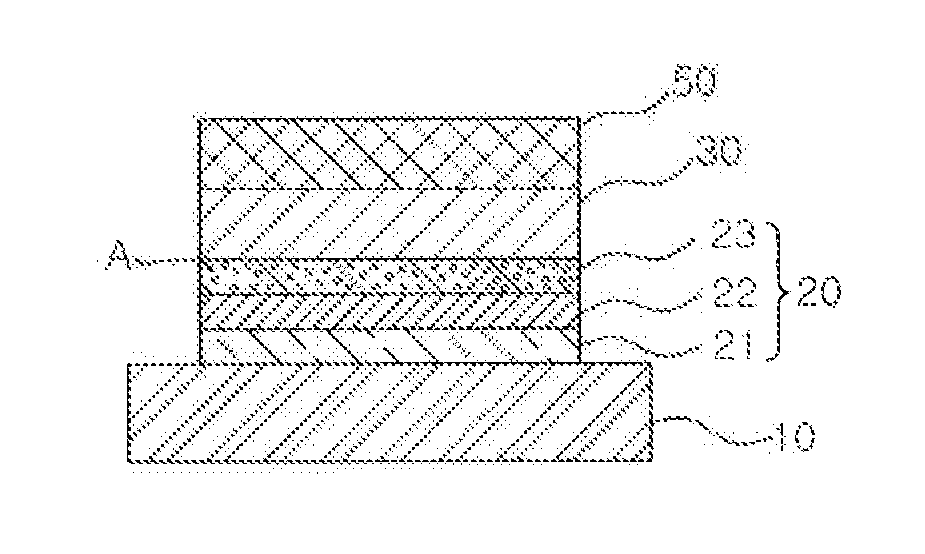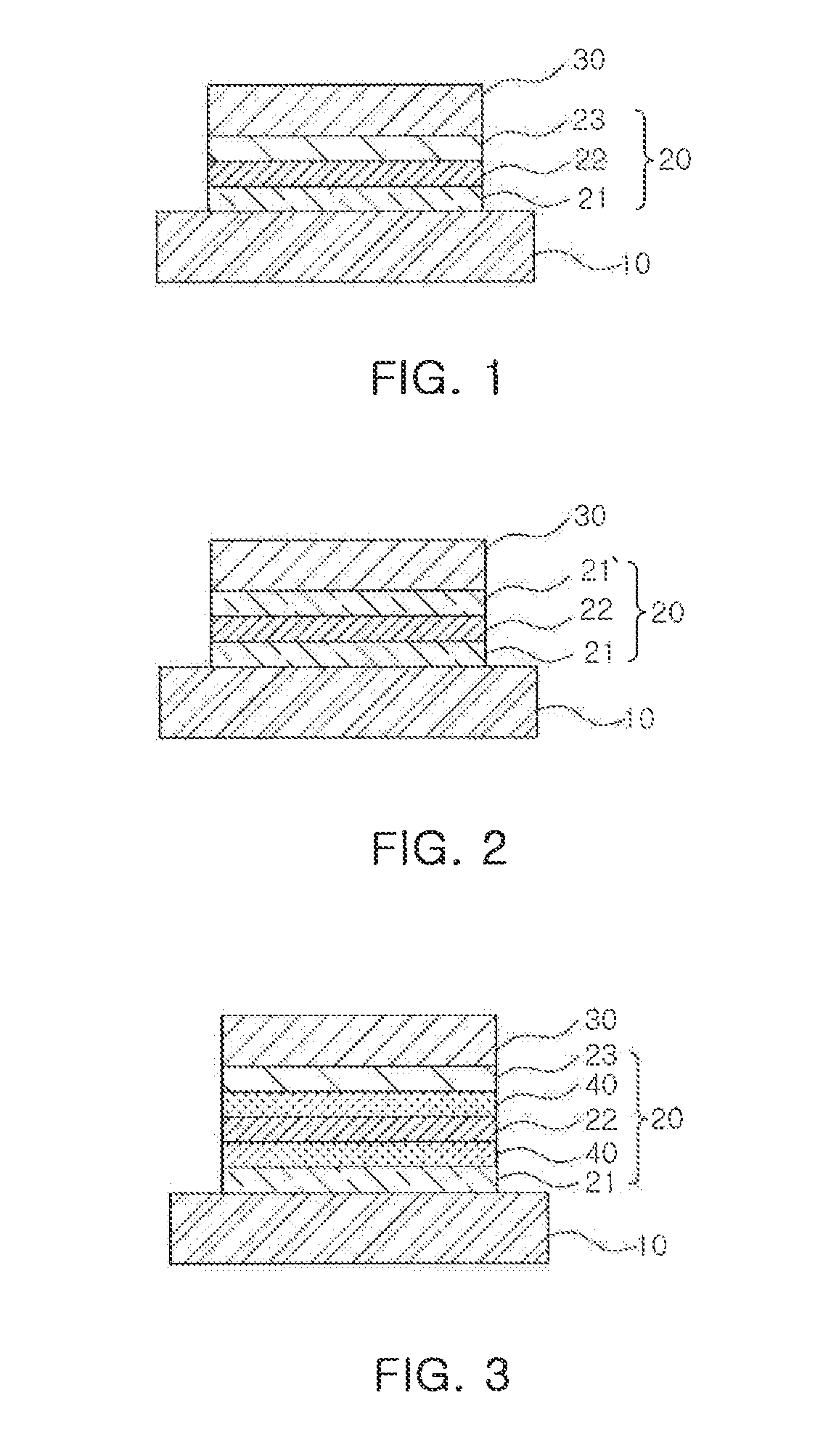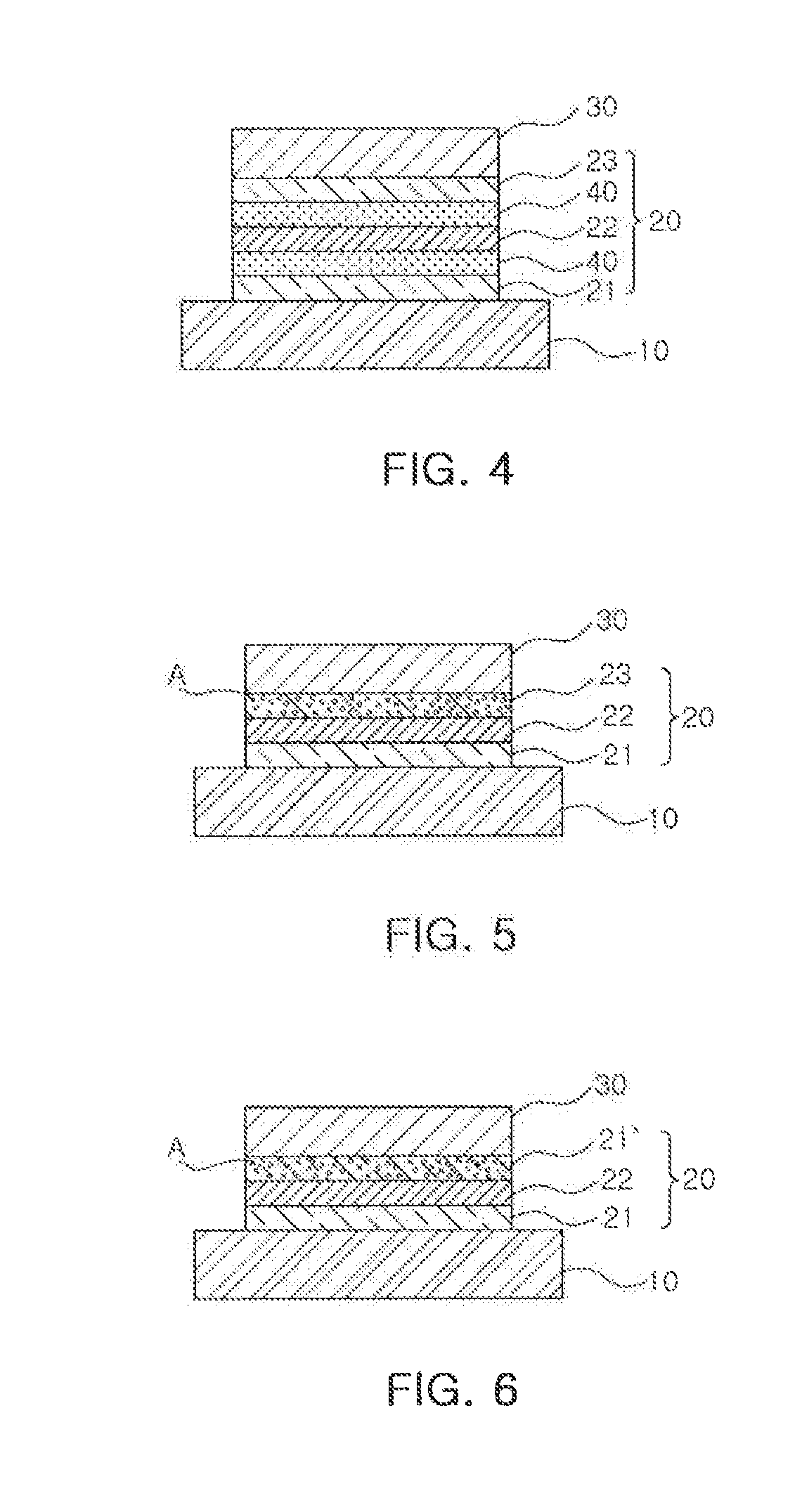Solar cell substrate, method for manufacturing same, and solar cell using same
- Summary
- Abstract
- Description
- Claims
- Application Information
AI Technical Summary
Benefits of technology
Problems solved by technology
Method used
Image
Examples
example 1
[0098]In order to check an effect of preventing diffusion of a solar cell substrate having a multilayered metal diffusion barrier layer, a stainless steel (STS 430) lower substrate was prepared, and Or was deposited on the stainless steel lower substrate to a thickness of 100 nm to form a diffusion barrier layer as Comparative Example 1. Further, Mo was deposited on the stainless steel lower substrate to a thickness of 10 nm under the same conditions as those in the Comparative Example 1, and Cr was deposited again on the deposited Mo on the stainless steel lower substrate to form a metal diffusion barrier layer formed of double layers of Mo / Cr as Inventive Example 1.
[0099]The deposition was conducted by a sputtering method, and the deposition was carried out by applying power of 1200 W to a target under conditions of a pressure of 7 mTorr and a flow rate of Ar 10 sccm.
[0100]Observation results were illustrated in FIGS. 10 and 11 respectively after heat-treating the prepared diffusi...
example 2
[0103]In order to confirm a diffusion preventing effect of a multilayered structure, a diffusion barrier layer was formed by depositing SiO2 to a thickness of 1000 nm on the stainless steel substrate using a substrate made of stainless steel (STS 430 material) as Comparative Example 2. Further, Mo was deposited on the stainless steel substrate to a thickness of 60 nm under the same conditions as those in the Comparative Example 2, and SiO2 was deposited on the deposited Mo of the stainless steel substrate to a thickness of 1000 nm to form, a diffusion barrier layer formed, of double layers of SiO2 / Mo as Inventive Example 2.
[0104]The deposition process of SiO2 was executed by a PECVD method, wherein the SiO2 was deposited, by applying a power of 200 W and maintaining flow rates of N2O 600 sccm, SiH4 45 sccm and Ar 700 sccm under a pressure of 800 mTorr. The Mo was deposited by applying a power of 1200 W and maintaining a flow rate of Ar 10 sccm under a pressure of 7 mTorr.
[0105]Obser...
example 3
[0108]In order to confirm a diffusion preventing effect of a multilayered structure including an oxide layer, photo-conversion efficiency of a solar cell according to whether the oxide layer had been formed or not was measured. An ordinary sodalime glass substrate was applied in Comparative Example 3. A diffusion barrier layer was formed in Comparative Example 4 by preparing a substrate made of stainless steel (STS 430 material) and depositing SiO2 to a thickness of 1000 nm on the stainless steel substrate. Further, a diffusion barrier layer consisting of double layers of SiO2 / Mo was formed in Inventive Example 3 by depositing Mo so a thickness of 20 nm on a stainless steel substrate under the same conditions as those in the above-mentioned stainless steel substrates and depositing SiO2 to a thickness of 500 nm on the deposited Mo of the stainless steel substrate. In addition, a diffusion barrier layer consisting of quadruple layers of SiO2 / Mo / SiO2 / Mo was formed in Inventive Example...
PUM
| Property | Measurement | Unit |
|---|---|---|
| Temperature | aaaaa | aaaaa |
| Fraction | aaaaa | aaaaa |
| Percent by mass | aaaaa | aaaaa |
Abstract
Description
Claims
Application Information
 Login to View More
Login to View More - R&D
- Intellectual Property
- Life Sciences
- Materials
- Tech Scout
- Unparalleled Data Quality
- Higher Quality Content
- 60% Fewer Hallucinations
Browse by: Latest US Patents, China's latest patents, Technical Efficacy Thesaurus, Application Domain, Technology Topic, Popular Technical Reports.
© 2025 PatSnap. All rights reserved.Legal|Privacy policy|Modern Slavery Act Transparency Statement|Sitemap|About US| Contact US: help@patsnap.com



